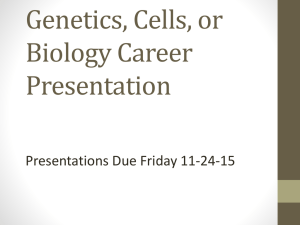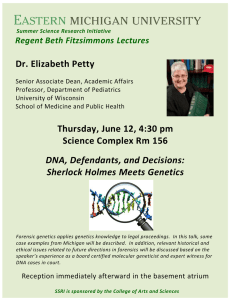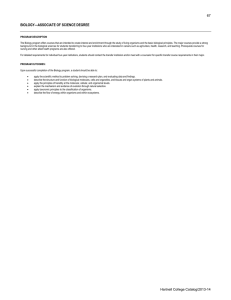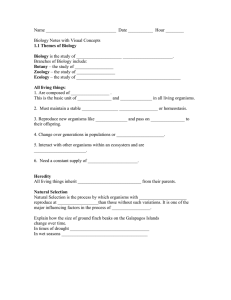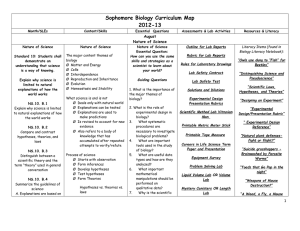AP Biology Course Planner (Lecture and Lab Schedule)
advertisement
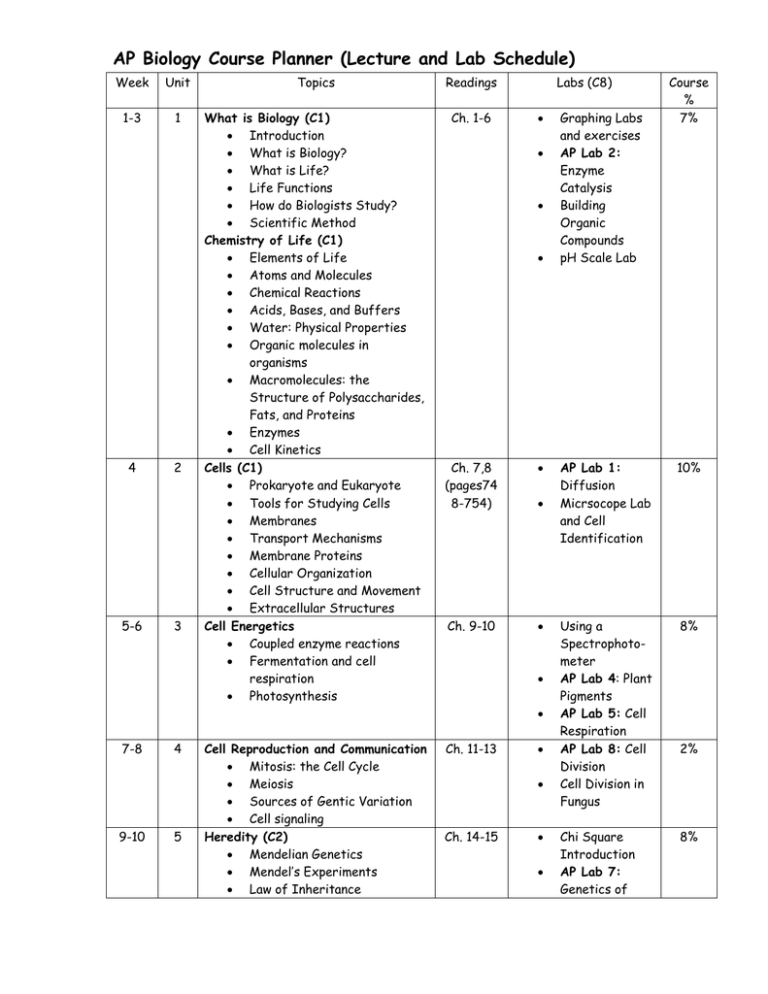
AP Biology Course Planner (Lecture and Lab Schedule) Week Unit Topics Readings 1-3 1 What is Biology (C1) Introduction What is Biology? What is Life? Life Functions How do Biologists Study? Scientific Method Chemistry of Life (C1) Elements of Life Atoms and Molecules Chemical Reactions Acids, Bases, and Buffers Water: Physical Properties Organic molecules in organisms Macromolecules: the Structure of Polysaccharides, Fats, and Proteins Enzymes Cell Kinetics Cells (C1) Prokaryote and Eukaryote Tools for Studying Cells Membranes Transport Mechanisms Membrane Proteins Cellular Organization Cell Structure and Movement Extracellular Structures Cell Energetics Coupled enzyme reactions Fermentation and cell respiration Photosynthesis Ch. 1-6 4 5-6 2 3 Labs (C8) Ch. 7,8 (pages74 8-754) Ch. 9-10 7-8 9-10 4 5 Cell Reproduction and Communication Mitosis: the Cell Cycle Meiosis Sources of Gentic Variation Cell signaling Heredity (C2) Mendelian Genetics Mendel’s Experiments Law of Inheritance Ch. 11-13 Ch. 14-15 Graphing Labs and exercises AP Lab 2: Enzyme Catalysis Building Organic Compounds pH Scale Lab Course % 7% AP Lab 1: Diffusion Micrsocope Lab and Cell Identification 10% Using a Spectrophotometer AP Lab 4: Plant Pigments AP Lab 5: Cell Respiration AP Lab 8: Cell Division Cell Division in Fungus 8% Chi Square Introduction AP Lab 7: Genetics of 8% 2% AP Biology Course Planner (Lecture and Lab Schedule) Law of Segregation Law of Independent Assortment Inheritance Patterns Chromosome structure The Chromosome Theory Chromosomal Abnormalities Molecular Genetics (C2) DNA Overview DNA Discovery RNA and DNA structure RNA and DNA function DNA Replication Transcription, Translation Protein Systhesis Gene Regulation Mutation Viral structure and function Nucleic Acid Technology Applications of Biotechnology Diversity of Organisms (C3) Evolutionary Patterns Evolutionary Relationships Survey of Diversity of Life Naming Organisms Constructing Phylogenic Trees Phylogenic Classification Modern Taxonomy History of Life on Earth Major Body Plans Evolution (C3) Darwin’s Theory of Evolution Natural Selection The Origin of the Species Early Evidence of Life Evidence for Evolution Mechanisms for Evolution Speciation Geographic Isolation Process of Genetic Change Preserving Diversity Relationships between Organisms Adaptations Classifications Ecology (C3) Population Dynamics Drosophila 11-13 14 15-17 18-21 6 7 8 9 Ch. 16-21 Ch. 26-31 Ch. 22-25 Ch. 50-55 AP Lab 6: Molecular Genetics Detecting the Huntington’s Gene Electrophoresis 9% Survey of Organisms Restriction Enzyme Analysis between organisms Fossil Dating 8% AP Lab 8: Population Genetics Hardy Weinberg and the Bengal Tiger 8% AP Lab 12: Dissolved 10% AP Biology Course Planner (Lecture and Lab Schedule) Communities and Ecosystems Behavior Conservation and Global Issues Plants (C3) Reproduction, Growth, Development Vascular Plants Cones, Flowers, Seeds Fungi Structural, Physiological, and Behavioral Adaptations Environmental Response Introduction of Invertebrates and Vertebrates (C3) Characteristics of Invertebrates Characteristics of Vertebrates Oxygen and Primary Productivity 22-24 10 25 11 26-29 30 12 1-12 Body Systems of Animals (C3) Nervous System Circulatory System Immune System Digestive System Reproductive System Homeostasis Review for AP Exam Ch. 3536, 38-39 Plant Anatomy AP Lab 9: Transpiration 10% Ch. 3234, & 40 Vertebrate Structure Frog Dissection Invertebrate Structure Earthworm Dissection AP Lab 10: Physiology of the Circulatory System Sheep Heart Dissection Sheep Brain Dissection 10% Ch. 41-48 Ch. 1-55 12%

